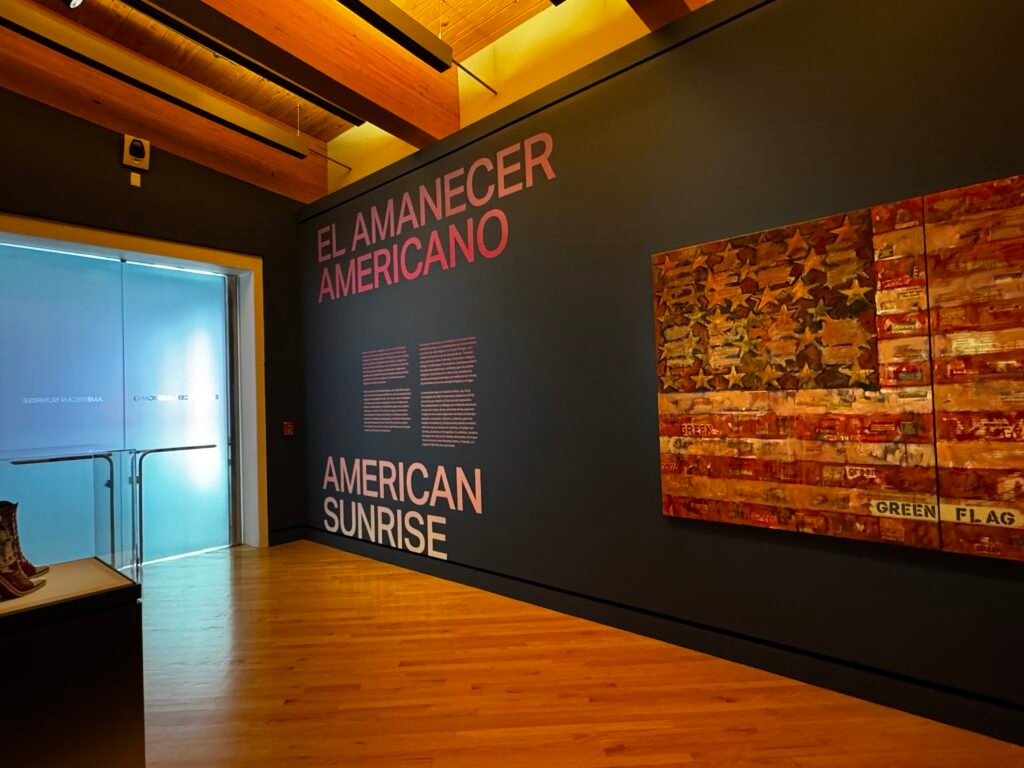Physical Address
304 North Cardinal St.
Dorchester Center, MA 02124
Physical Address
304 North Cardinal St.
Dorchester Center, MA 02124

Top Image: “Crystal Bridges Museum of American Art” by kevin dooley is licensed under CC BY 2.0.
Tucked away in the lush, wooded hills of Bentonville, Arkansas, the Crystal Bridges Museum of American Art is a revelation—a place where world-class American art seamlessly meets the tranquility of nature.
Before my visit, I had little knowledge of this museum and could not have anticipated the shock of discovering such a spectacular, top-tier institution nestled in the heartland, far removed from the cultural capitals of New York, Chicago, or Los Angeles.
From the moment I arrived, I was captivated—not only by the breathtaking architecture and the extraordinary collection, but also by the museum’s deep commitment to inclusivity, education, and cultural dialogue.
This post is my attempt to share the story and soul of Crystal Bridges—from its visionary founder to its architectural elegance, ever-evolving collection, and far-reaching mission.
Crystal Bridges was founded in 2011 by philanthropist Alice Walton, daughter of Walmart founder Sam Walton.
“Walmart Visitors’ Center” by Walmart Corporate is licensed under CC BY 2.0.

Walton’s vision was simple yet profound: art belongs to everyone regardless of geography, background, or income.
Walton was moved by the belief that art should not be confined to elite cities, but should reach communities often overlooked by traditional institutions.
Thanks to Walmart’s sponsorship, general admission is free, ensuring that the museum’s celebration of the American spirit—through both art and nature—is accessible to all. (Note: Some special exhibitions may require paid admission.)
Crystal Bridges is more than a museum. It is a place of ongoing conversation between America’s past and present, nature and innovation, inclusion and excellence.

One of the most moving aspects of my visit was the museum’s Indigenous Peoples Acknowledgment, which reflects a rare institutional humility and sense of accountability. In their own words:
“We acknowledge the Caddo, Quapaw, and Osage, as well as the many Indigenous caretakers of this land and water… We are conscious of the role in colonization that museums have played. As cultural institutions, we have a responsibility to engage in the dismantling of historical and systemic invisibility of Indigenous peoples past, present, and future.”
This commitment is not just symbolic; it’s woven throughout the curatorial voice of the museum.

As an architecture enthusiast, I found myself equally enthralled by the museum’s design and its natural setting. I wandered inside and out, exploring every overlook and bridge, savoring how seamlessly the buildings connect with their environment.

The name “Crystal Bridges” refers both to the nearby Crystal Spring and the literal bridges that invite visitors to pause and reflect.
Designed by Moshe Safdie, the museum’s pavilions stretch gracefully across spring-fed ponds and forested trails, linked by elegant glass-and-wood bridges that blur the line between indoors and out.

The museum store, designed by Marlon Blackwell, and the restaurant perched above the ponds, offer further opportunities to enjoy the seamless integration of art, architecture, and nature.
Nearby, the 120-acre campus is a destination in itself, with miles of walking trails, outdoor sculptures, and even the historic Bachman-Wilson House, designed by Frank Lloyd Wright, relocated from New Jersey and beautifully restored.


The collection itself is a dynamic tapestry of American identity, spanning early colonial portraiture to provocative contemporary installations. I was especially impressed by the curatorial focus on amplifying voices historically overlooked—women, artists of color, Indigenous creators—ensuring the evolving American narrative is told through many perspectives.
Crystal Bridges’ collection is a journey through five centuries of American art. Highlights include:
The museum also continually rotates thought-provoking exhibitions.


Crystal Bridges is currently involved in a landmark partnership with the Louvre in Paris, the High Museum of Art in Atlanta, and the Terra Foundation. This collaboration facilitates the exchange of artworks and joint programming, aiming to highlight the cross-influences between European and American art through thematic exhibitions and shared initiatives.


As both an artist and educator, I was deeply impressed by Crystal Bridges’ educational outreach. The museum covers all expenses for a school field trip, including transportation and even meals for everyone involved – something I rarely see in the museum world.
Beyond that, they offer:
Crystal Bridges supports scholarly research through two major fellowship programs:
Other initiatives include residency and stipend programs through the Tyson Think Tank, which fosters forward-thinking discourse in the arts.
In 2020, Crystal Bridges expanded its reach with The Momentary, a satellite contemporary art space in downtown Bentonville. Admission is free, and the venue offers a dynamic platform for experimental visual and performing arts.
The Momentary, 507 SE E St., Bentonville


During my visit, I took two guided tours—one offering an overview of the museum’s collection and philosophy, and another delving into its architectural marvels. Both experiences were fascinating and deepened my appreciation for the museum’s mission and vision.
The quality of the exhibitions was superb, featuring groundbreaking artists from the past and present. I could sense Alice Walton’s passion and commitment to American art in every detail.
Her journey began in childhood with painting watercolors alongside her mother. Over time, this blossomed into a lifelong dedication to art history and cultural philanthropy.
Her goal was to bring art appreciation to Arkansas and neighboring states, and to draw visitors from across the nation.
After experiencing Crystal Bridges, I genuinely believe the museum is a compelling reason for many to consider relocating to this region, given its profound educational and cultural offerings for all generations. Alice also founded a medical school, the Alice L. Walton School of Medicine (AWSOM) in Bentonville, Arkansas. It offers tuition-free education for its first five cohorts of students.

As of my visit, construction was underway on a major expansion—scheduled for completion in 2026—that will add new galleries and educational spaces, increasing the museum’s size by roughly 50%.
I am already looking forward to returning to see the museum’s next chapter unfold!
Learn More